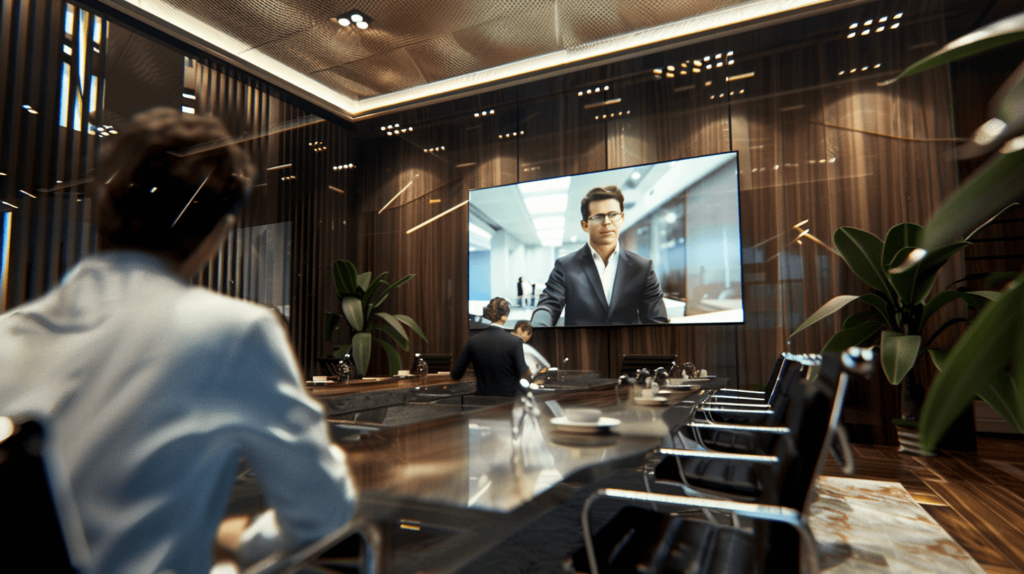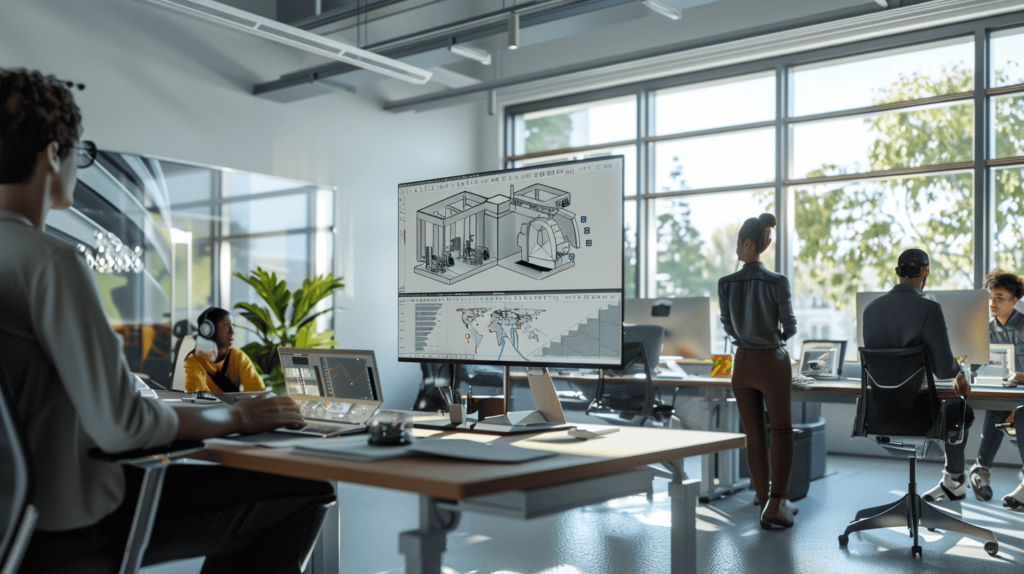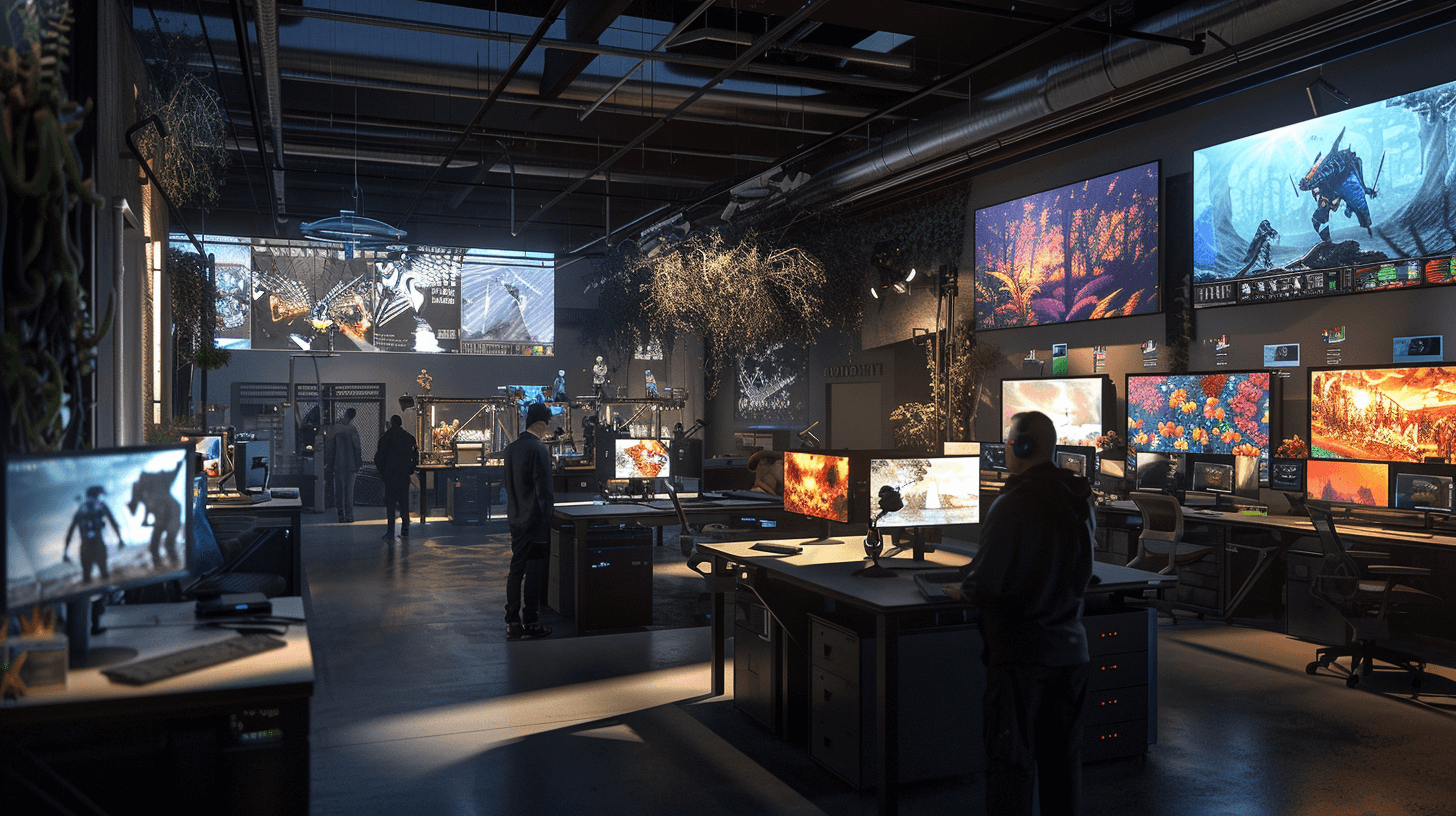Introduction

The 3D modeling industry has exploded in recent years, with a market expected to grow by over 20% annually, affecting sectors from video gaming to architectural design. Imagine the world of gaming without the detailed, lifelike characters brought to life by expert 3D modelers or films without the breathtaking special effects that draw audiences into new universes. These achievements underscore not just the artistic talent behind 3D modeling but its significant impact on the entertainment and design industries.
This dynamic field not only fuels sectors like gaming, film, product design, and architecture but also pioneers advancements in medical imaging and scientific visualization. 3D modelers are at the forefront, turning abstract concepts into tangible assets that push the boundaries of what technology can achieve. Their work enhances visual communication, drives innovation, and solves complex problems by making the unseen visible and the unimaginable real.
By the end of this article, you will understand how to identify and hire the right 3D modeler who aligns with your specific project needs. We will delve into the nuances of the hiring process and provide you with the tools to integrate skilled professionals into your team effectively. Whether you’re looking to revolutionize your product designs or create the next blockbuster game or film, finding the right 3D modeler is a crucial step towards turning your visionary ideas into reality. With this guide, navigate the complexities of hiring to ensure you select a candidate who will not only fulfill your creative vision but also propel your projects to new heights. Get ready to transform your creative processes by choosing a team member who brings more than just technical skills—they bring a capability to innovate and inspire.
What are the types of 3d Modeling jobs?
Understanding the Role of a 3D Modeler

3D modeling is a sophisticated process of creating a mathematical representation of any three-dimensional surface of an object via specialized software. The applications of this technology are vast, spanning across video games, films, engineering, architecture, and more. This versatility underscores the pivotal role of 3D modelers in today’s design and entertainment industries.
Essential Skills and Software Proficiency
Essential skills for a proficient 3D modeler include strong spatial awareness, acute attention to detail, and artistic creativity. Mastery of technical software is also crucial—proficient modelers are adept in using industry-standard tools such as Autodesk Maya, Blender, and 3ds Max. These tools enable modelers to create detailed textures, realistic animations, and complex geometries essential for high-quality 3D production.
Impact Across Industries
The impact of skilled 3D modelers can be observed across various sectors. For instance, in the gaming industry, a character modeler’s expertise transforms basic sketches into vivid, dynamic characters that enhance the gaming experience. In architecture, 3D visualizations help clients and stakeholders visualize the end product in a real-world context, significantly influencing decision-making processes. Product designers utilize 3D modeling to prototype designs rapidly and efficiently, greatly reducing time and cost while increasing innovation.
Strategic Importance in Hiring
Understanding the significant role and skills of 3D modelers is crucial when you’re looking to hire. Appreciating the scope of their capabilities and the strategic influence they can wield on projects will enable you to make informed decisions throughout the hiring process. Recognizing the depth of expertise a skilled modeler brings to the table will not only aid in selecting the right candidate but also in effectively integrating their skills to drive your projects forward.
In embarking on this hiring journey, remember the importance of aligning your specific needs with the modeler’s specialized skills. Doing so ensures not only the success of your projects but also fosters an environment of creativity and innovation.
Identifying Your Project Needs

When embarking on a project that requires 3D modeling, the clarity in defining your project needs cannot be overstated. Begin by comprehensively understanding the scope of your project. What are the final deliverables? By what deadline must they be completed? What are the specific technical requirements? Assessing factors such as the complexity of the models needed, the required level of detail, and any industry-specific considerations is crucial. These elements will significantly influence the type of 3D modeler best suited to your project, ensuring that you align project demands with the right expertise.
Moving forward, the importance of selecting a 3D modeler with the appropriate specialization cannot be overlooked. 3D modelers often focus on specific domains such as character creation for games and films, architectural visualization for construction and real estate projects, or product design for manufacturing. Each specialization not only demands unique technical skills and software proficiencies but also different levels of artistic and creative approach. For example, a modeler skilled in creating hyper-realistic characters for video games may not necessarily excel in generating detailed architectural models. It is imperative to align your project’s specific requirements with a modeler’s specialized skills to ensure the best fit, thereby maximizing the chances of your project’s success.
The cultural and creative fit of the modeler with your project and organization is vital. The modeler’s personal style and creative process should complement your project’s aesthetic goals and the overall company culture. Evaluating a candidate’s portfolio and previous projects provides insight into their artistic style and how well they might integrate with or enhance your existing project team.
Understanding the scope of your project, the necessary specialization of the 3D modeler, and ensuring a good cultural and creative fit are essential strategies in selecting the right professional. These considerations are not just about filling a position but about making an informed decision that sets the stage for seamless project execution and creative success. A thorough vetting process based on these principles not only aids in making an informed hiring decision but also significantly contributes to the overall outcome and success of your project.
3 New Skills That Will Evolve Your Graphic Designs
Where to Find 3D Modelers

Finding the right 3D modeler for your project involves tapping into various online platforms and communities where professionals showcase their skills. LinkedIn, Behance, and ArtStation are pivotal hubs for discovering talented 3D modelers. LinkedIn offers a vast professional network, allowing you to connect with modelers who may also come recommended by mutual contacts. Behance focuses on creative portfolios, giving you insight into a modeler’s artistic ability, while ArtStation is renowned within the 3D modeling community for its high-quality showcases of both hobbyist and professional work. Utilize these platforms by performing targeted searches and exploring portfolios that align with your project’s style and requirements.
Transitioning to the professional sphere, specialized recruitment agencies provide a streamlined approach to hiring skilled 3D artists. These agencies offer access to pre-vetted talent and have a deep understanding of the industry’s needs. Agencies like Creative Circle, Aquent, or Vitamin T specialize in creative roles and can help match your project with the perfect candidate by understanding your specific requirements.
Moreover, networking plays a crucial role in the hiring process. Attending industry-specific events, conferences, and workshops not only broadens your understanding of the current market but also provides opportunities to meet and engage with 3D modelers in person. Events such as SIGGRAPH, GDC (Game Developers Conference), and 3Dexpo are renowned for attracting top talent and facilitating networking that might not occur via online platforms.
Combining these approaches—leveraging online platforms, engaging with recruitment agencies, and participating in networking events—greatly enhances your ability to find a 3D modeler who not only has the requisite skills but also fits well within the cultural and creative framework of your project. Remember, finding the right modeler is about more than just skill; it’s about finding someone who can contribute to and thrive within your project’s specific environment.
The Hiring Process

Crafting an effective job description for a 3D modeler is the foundational step in attracting the right candidates. It is crucial to clearly state the necessary skills, software proficiencies, and project expectations. Start with outlining required software skills such as Autodesk Maya, Blender, or 3ds Max, and specify the level of experience needed, from beginners to seasoned professionals. Artistic capabilities should also be highlighted, detailing whether the role requires expertise in character animation, architectural visualization, or another specialized field. To pique the interest of potential candidates, include examples of specific projects they would work on, thus attracting those who are genuinely enthusiastic about the challenges your company offers.
Transitioning to the screening and interviewing process, it’s important to know how to effectively evaluate a 3D modeler’s portfolio. Look for creativity, technical skill, and a diversity of work that aligns with your project needs. The interview should be structured not only to assess technical abilities but also to evaluate problem-solving skills and cultural fit. Sample questions might include:
- “Can you describe a challenging project you worked on and how you overcame the difficulties you faced?”
- “How do you manage tight deadlines and project feedback?”
- “What software tools are you most proficient in, and how have you applied them in past projects?”
Practical assessments are invaluable in the hiring process, providing real-world scenarios to candidates to demonstrate their actual skill level and problem-solving capabilities. Consider assigning tasks such as creating a small model relevant to your current projects or asking for a redesign of an existing project piece. This not only shows you the candidate’s technical expertise and creativity but also how they handle feedback and iterations, crucial aspects of collaborative creative work.
Each step, from crafting a detailed job description to executing in-depth interviews and practical assessments, is vital in selecting a 3D modeler who not only fulfills the technical and artistic demands of the role but also fits well within your team’s culture. A meticulous approach ensures that the new hire will positively contribute to both the projects at hand and the overall team dynamics, thereby reinforcing the strategic value of the hiring process.
Onboarding and Collaboration

Effective onboarding is crucial for integrating a new 3D modeler into your team, ensuring they become a productive and harmonious member of your workforce. Start by designing a comprehensive onboarding plan that goes beyond simple introductions and basic training. This plan should include a detailed overview of project goals, team roles, and key company processes to provide the new modeler with a clear understanding of how they fit into the larger picture. Assigning a mentor or a buddy can be particularly beneficial; this person can guide the new modeler through the initial months, helping them navigate the specifics of the tools, software, and workflow your team employs. This mentorship not only speeds up the acclimatization process but also helps forge strong bonds within your team.
Transitioning to fostering collaboration, it is essential to integrate the new modeler with existing team members effectively. Employ techniques such as regular team meetings, collaborative projects, and integration sessions that encourage active participation and contribution to ongoing projects. These collaborative practices are vital for building a cohesive team atmosphere and boosting the creative and productive output of the team. They ensure that every team member, including the new modeler, feels valued and is given a voice to express their ideas and perspectives.
Furthermore, implement regular update sessions where the new modeler can showcase their progress and receive constructive feedback. These sessions are not just check-ins but are opportunities for open communication and continuous improvement. They allow the new modeler to align more closely with the project’s objectives and the company’s culture, adjusting their work based on constructive critiques and praises.
Reinforcing the strategic importance of a thoughtfully structured onboarding process and active collaboration practices. These elements are crucial for ensuring that the new modeler not only fits into the team technically and culturally but also evolves into a valuable and effective member of the organization. Proper integration practices contribute significantly to the success of projects and help in fostering a dynamic work environment that promotes innovation, creativity, and continuous professional growth. Such an environment not only attracts top talent but also retains them, thereby enhancing the overall competitive edge and productivity of your team.
Conclusion

In this guide, we’ve explored the critical role of 3D modeling across a spectrum of industries including gaming, film, product design, and architecture. Understanding the scope of 3D modeling and recognizing the diverse specializations within the field are foundational in identifying the right talent for your projects. We’ve discussed how to assess project needs thoroughly, ensuring the 3D modeler you choose not only has the required technical skills but also aligns creatively and culturally with your organization’s vision.
The hiring process for a 3D modeler, as detailed, involves several crucial steps—from drafting a precise job description that attracts qualified candidates to conducting interviews that delve into both technical prowess and problem-solving capabilities. Practical assessments also play a vital role, offering a real-world glimpse into a candidate’s applicability and creativity under project constraints.
As we conclude, remember the transformative impact a skilled 3D modeler can bring to your team. This isn’t just about filling a role, but about inviting innovation, enhancing project quality, and pushing creative boundaries. Therefore, I encourage you to apply the strategies discussed to fine-tune your hiring process. Seek out candidates who not only have the ability to deliver visually and technically but who will also contribute to your projects in meaningful ways, ensuring your creative vision comes to fruition with precision and flair.
Act now—leverage these insights to attract, evaluate, and integrate top 3D modeling talent into your team and watch as your projects reach new heights of success. The investment in finding the right modeler will pay dividends in innovation, efficiency, and market competitiveness. Let the journey begin with your next hiring decision.




